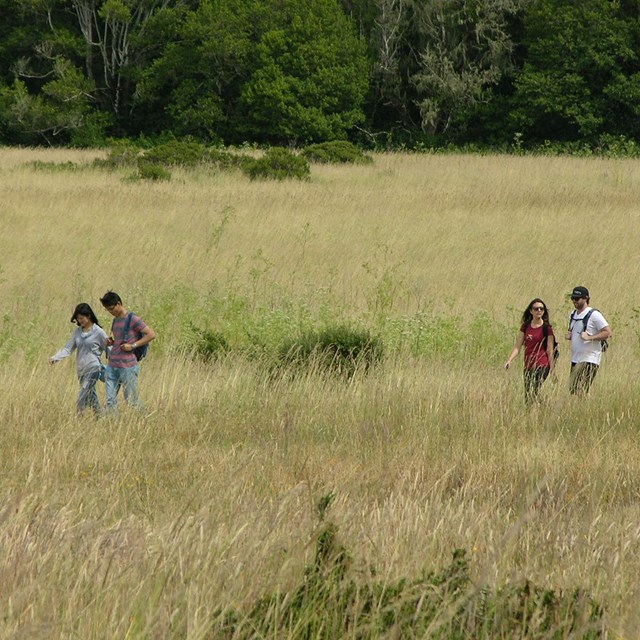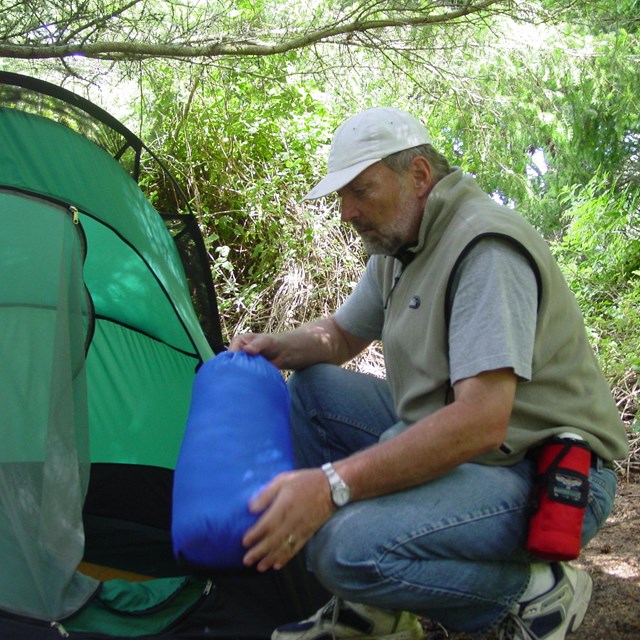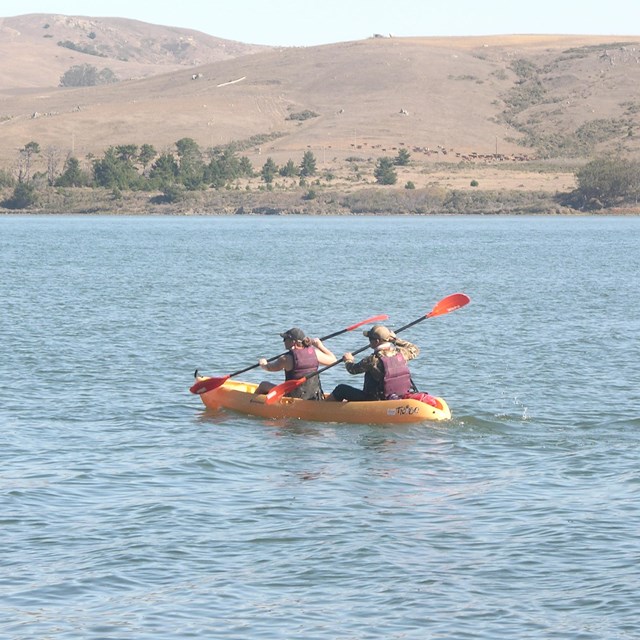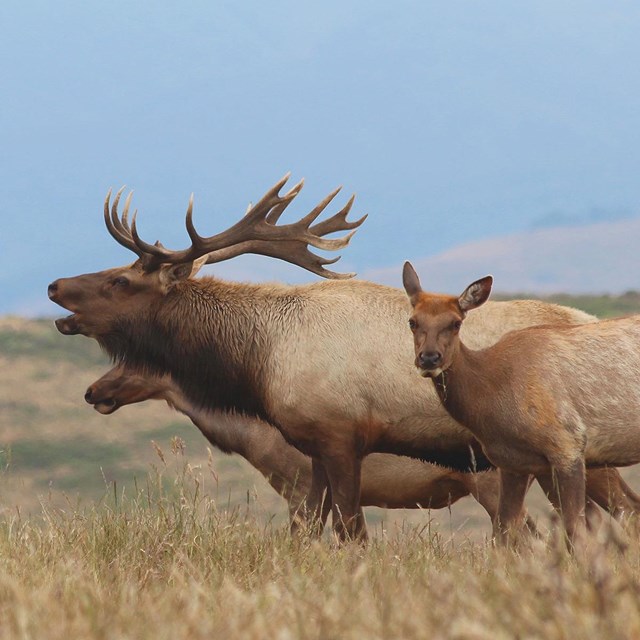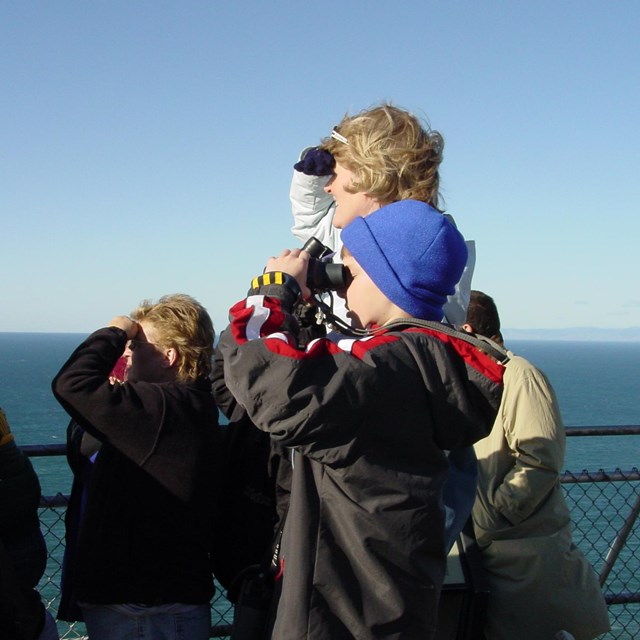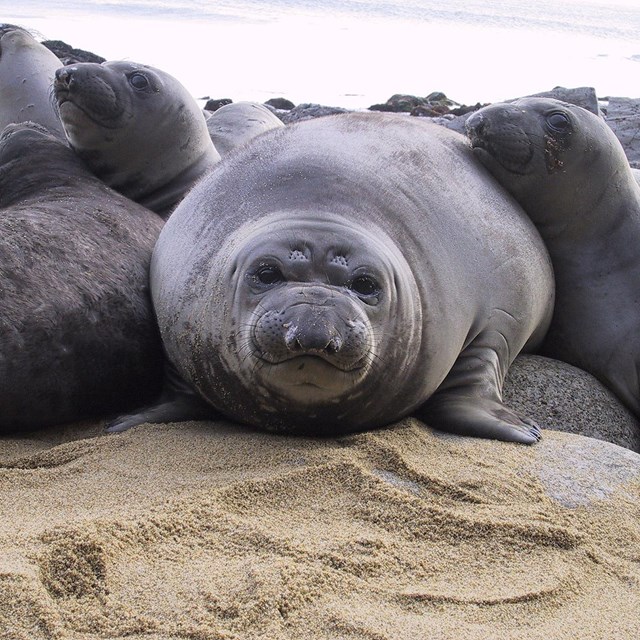How much time do you have?Visitors can easily spend a day, a weekend, or even longer exploring what Point Reyes has to offer. The park maintains about 240 kilometers (150 miles) of trails, four backcountry campgrounds, several historical structures, three visitor centers, numerous beaches to which one may drive or walk, and much, much more. With so much to see and do, you might wonder where to begin. That is why we've put together the following list of suggestions. While we do list a couple hikes that depart from Bear Valley below, if your interests are solely related to hiking you should see our Trail Guide & Suggested Hikes page. Before you leave homeBefore you leave home, always check our Current Conditions page for the latest updates on facilities, trails, and areas that may be closed. Visit our Maps page to download maps showing current closures. For a one-hour visit
NPS Photo Bear Valley Visitor CenterIf you can only stay for an hour, there is plenty to keep you busy in and around the Bear Valley Visitor Center. The visitor center itself contains several ecological and historical museum exhibits, along with a weather station and an auditorium for enjoying videos, slide shows, and other educational programs. Morgan Horse RanchChildren (and many adults) enjoy visiting the Morgan Horse Ranch. Located up a small hill behind (to the southwest of) the Bear Valley Visitor Center, it's a short, five-minute walk to see the horses. 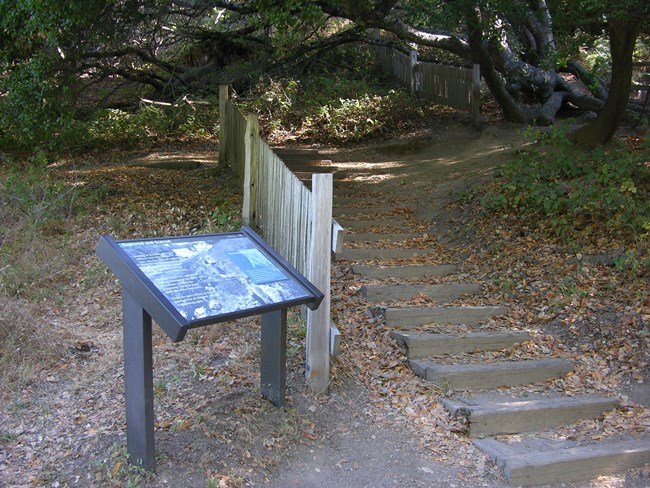
NPS Photo Earthquake TrailFor an introduction to local geological history, there is the popular Earthquake Trail. This nearly flat trail is a short paved loop that explores the San Andreas Fault Zone. Interpretive signs describe the geology of the area. The trail entrance is located across the parking lot from the visitor center just to the left of the picnic area restrooms. (1.0 km / 0.6 miles) Woodpecker TrailIf a walk in the woods is more of what you're looking for then perhaps you'd enjoy a short hike on the Woodpecker Trail. This beautiful loop trail explores local forest and meadows, with interpretive information describing some plants and animals you may see along the way. (1.2 km / 0.7 mi) Kule LokloYou might also like to visit Kule Loklo. A short path starting from the visitor center will lead you up to a replica of this Coast Miwok Indian village. Interpretive signs briefly describe Coast Miwok culture, history, and the structures in the village. (1.3 km / 0.8 mi) For up to a three-hour visit
NPS Photo Point Reyes LighthouseWith a three-hour stay in the park, visitors can see and do a number of things, one of which is to visit the Point Reyes Lighthouse. Travel time to the Lighthouse parking lot from the Bear Valley Visitor Center is approximately 45 minutes. From the parking lot there is a 10–15 minute walk to the Lighthouse Visitor Center. The lighthouse itself can be seen from the observation deck located near the Lighthouse Visitor Center. To reach the lighthouse you must descend 313 stairs from the observation deck to the facility. Note: Visit our Visitor Centers page to learn when the visitor center, the stairs leading down to the lighthouse, and the lighthouse are open. 
NPS Photo Tomales Point and Tule ElkA 35–40 minute drive from the Bear Valley Visitor Center can also get you to the Tomales Point Trailhead and Pierce Ranch. Here you can learn about the history of dairy ranching in the park though interpretive signs and historical structures. A short hike from the Pierce Ranch will take you further onto the 1,175 hectare (2,900 acre) peninsula where 200 to 400 tule elk roam. They can be seen any time of the year and often can be seen from the ranch parking lot. The most exciting time to see the tule elk is during the late summer to early autumn rut, late July through October. 
NPS Photo Go for a HikeIf you would prefer hiking for a few hours, Divide Meadow from the Bear Valley Trailhead is a pleasant destination and resting point for a picnic. From the trailhead, it is a casual stroll through a mixed Douglas fir forest along Bear Valley Creek to the tree-lined open grasses of the meadow. (5.1 km / 3.2 mi) A nice less-than-3-hour hike is up to Mount Wittenberg from Bear Valley Visitor Center. This steep 400 m / 1300 ft climb to the highest point in the park is not for the weak-hearted, but provides the adventurer with panoramic views of the Seashore and Olema Valley near its peak. (8 km / 5 mi) Visit our Trail Guide & Suggested Hikes page for other options and check out our Trail Advisories and Closures page for the latest trail updates. 
NPS Photo Visit a BeachMany of the park's beaches can be reached within a twenty- to thirty-minute drive from the Bear Valley Visitor Center. These include Limantour Beach, Drakes Beach, and North and South Beaches, as well as Heart's Desire Beach in Tomales Bay State Park. Several others may be reached by foot. Kenneth C. Patrick Visitor CenterAnother popular destination at Drakes Beach is the Kenneth C. Patrick Visitor Center. The visitor center has exhibits featuring early maritime exploration, marine fossils, and marine environment. A juvenile minke whale skeleton is suspended from the center's ceiling. 
NPS Photo Attend a Ranger-guided ProgramPoint Reyes National Seashore offers many ways for visitors to learn more about the park. Ranger-guided programs give visitors the opportunity to explore the wonders of Point Reyes with a Park Ranger. Programs are offered each weekend on both Saturdays and Sundays throughout the year, and are often offered weekdays during summer, winter, and spring breaks. And for a full-day visit (4 hours or more)Any combination of the activities listed above will provide a full day of fun and adventure. Keep in mind however that these activities are really just the beginning. Biking, kayaking, tide pooling, birding, whale watching, viewing elephant seals, and backpacking are all enjoyed by many here in the park—and the list just keeps going! For even more information on all the things you can do at Point Reyes visit our Outdoor Activities and Indoor Activities pages.
Make your fun adventure a safe one too!No one plans on getting hurt while out exploring in a national park. However, nature is unpredictable, structures are historical, and your equipment can unexpectedly fail. Planning ahead can be the key to a fun and safe adventure. Remember, safety starts with you! Use the NPS Trip Planning Guide and Checklist to help plan your trip. The guide provides key safety considerations to help you avoid some of the most common mistakes people make when visiting national parks. The guide is divided into the four phases of your trip. Additional articles are there to help you with selecting the Ten Essentials, preparing your Trip Plan, and Emergency Planning. Don't miss out on these important tips to help prepare you for an emergency! |
Last updated: December 26, 2024

